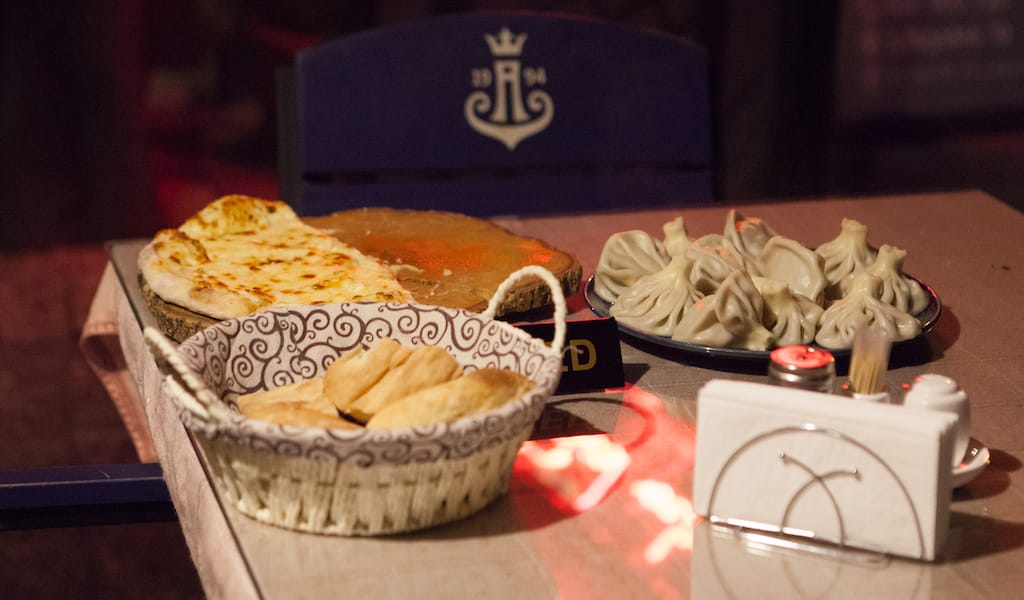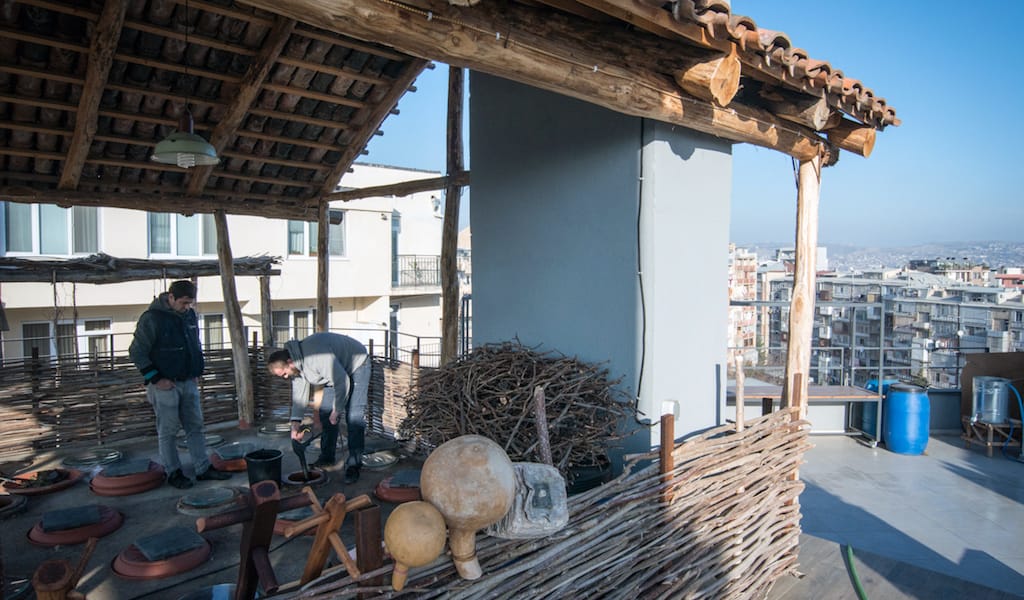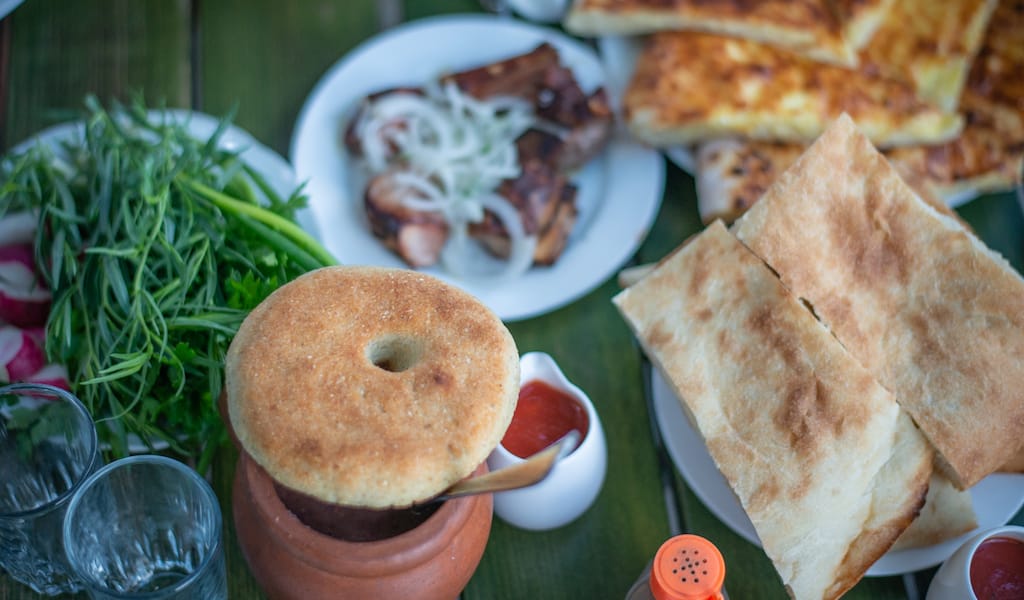Salty, sticky, and above all pungent, dambalkhacho certainly isn’t for the fainthearted. But for iron-nostrilled khinkali-lovers, the soft, moldy cheese is one of the main attractions at Asi Khinkali, a cozy cellar restaurant in Tbilisi’s Marjanishvili district.
Made in the mountains, dambalkhacho is challenging to find in the city, but Asi Khinkali has it on the menu both fried and hidden inside their delicious khinkali. Friends Lasha Kozhrisvhili and Paata Jorjikia opened Asi Khinkali three years ago, right at the beginning of the Covid-19 pandemic. “At the start, we had a little space just for online takeaway orders and then we moved here two years ago,” explains manager, Levan Shadize. Despite the challenging beginning, Asi Khinkali is now well-established in its physical location and serving up around 1,000 khinkali every day. And they’ve grown quickly in those three years; Levan told us that “Lasha made the khinkali [alone] at first and now we have 10 people in the kitchen.”

And why khinkali? “Khinkali is our traditional dish; it’s specific to us because Lasha and Pataa are from the Tianeti in the mountains, where khinkali is their main dish,” says Levan. “So they decided to make a restaurant inspired by familiar food. We only have traditional Georgian foods except one dish – french fries.” Khinkali are folded dumplings that are traditionally filled with meat, potato, cheese or mushroom, before being boiled. At Asi Khinkali, the classic khinkali and “chef’s khinkali,” filled with a mix of mutton and tarragon, are the most popular fillings, although they also make around 100 dambalkhacho khinkali every day.

Inspired by their childhood in the mountains, khinkali connoisseurs Lasha and Pataa wanted to include on their menu the dambalkhacho cheese they grew up eating. They source their cheese from their friend, Marta, in the small town of Tianeti, bringing it from the mountains to Tbilisi (about a two-hour drive). Made from buttermilk cottage cheese that is dried over a fire before being stored in clay containers underground, this pungent cheese is a bit of an acquired taste. Levan explains, “They store the cheese for at least one or two months and then it becomes like a little ball with a strong smell. It’s a smell that not everyone likes or enjoys eating. But if you don’t smell it or see it, it’s perfect.”
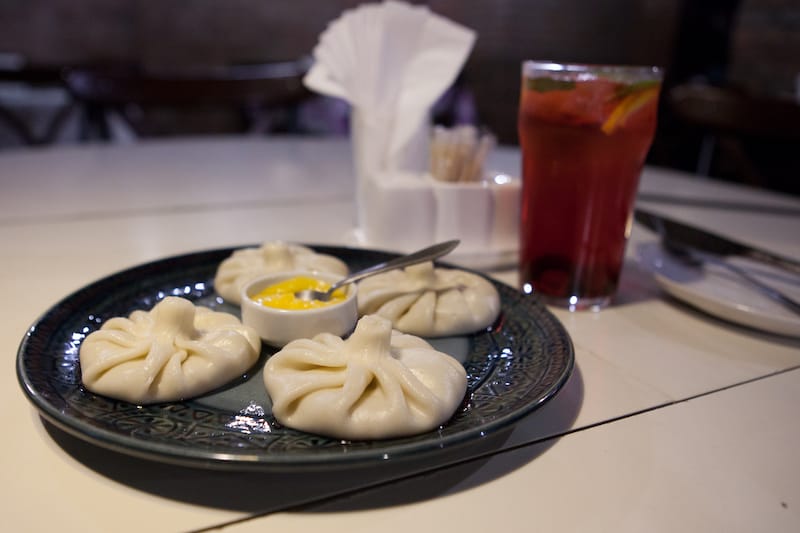
If the smell of the dambalkhacho feels a little overwhelming, there are always other delicious options to try as the menu keeps growing. Lasha develops new dishes inspired by his travels around Georgia and abroad. Each dish is a reinvention of a Georgian classic, meaning that they can take months to develop. Lasha’s take on a Georgian salad builds from the original three ingredients, cucumber, tomato and onion, to a mix of 12 ingredients. The new recipe includes pomegranate seeds, radish, and sesame oil mixed with the more traditional sunflower oil alongside vinegar, dill, parsley, and basil. Once it’s on the menu, a dish is there to stay. “For us, the main thing is that we keep the dishes the same as when we started – it doesn’t matter how many years we’re open, we want to keep our dishes tasting the same.” says Levan.
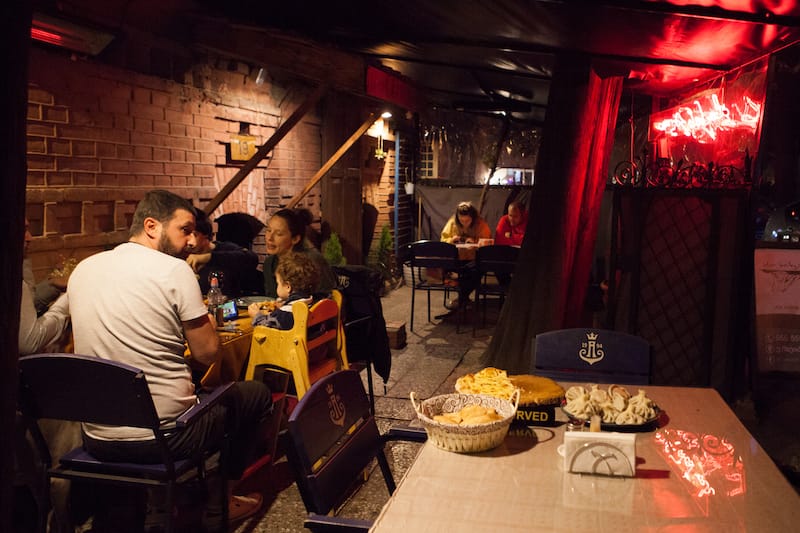
The food isn’t the only thing worth trying at Asi Khinkali. They also offer homemade wines from Kakheti, the region just to the east of Tbilisi, alongside beer and other drinks. “Pataa’s family makes it; they’ve been making wine for at least 10 years,” says Levan. “They make wine from Saperavi, Kinsmarouli, and Rkatseteli grapes. The Rkatseteli is made in qvevri [traditional earthenware vessels] because it’s a white wine and needs to be strong with more skin contact, and the others are made with a European method.” These three house wines offer customers a choice of red and white, as well as sweet or semi-sweet wine.
The interior of the restaurant is a cellar-like space with vaulted ceilings, welcoming and cozy, especially in the winter. Alternatively, you can enjoy sitting out under the trees on their tiny terrace, if you’re lucky to grab one of the few tables. Heated in the winter and shaded in the summer, the terrace is so popular that it’s worth making a reservation if you want one of these sought-after seats.

There are many dishes to add to your table at Asi Khinkali, but khinkali should definitely be the centerpiece. Order a range of fillings and once the khinkali arrive at the table, remember to hold them upside down by the knot to eat them. This technique avoids wasting any of the soupy deliciousness inside and the knots left on your plate are a testament to how many you manage to eat. And a good display of knots is in keeping with the name of this restaurant: Asi means 100 in Georgian and the name Asi Khinkali, 100 khinkali, was inspired by a well-known Georgian joke. As Levan tells it, “A man goes to a restaurant to eat khinkali and orders 99 khinkali. The waitress asks him, ‘Why not 100?’ The man replies, ‘Why not 100? Because I’m not a pig!’”
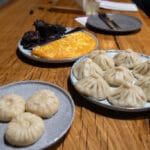 January 30, 2024 Pictograma
January 30, 2024 Pictograma
For a dish so ubiquitous, one would be forgiven to think there’s little to debate about […] Posted in Tbilisi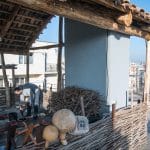 February 28, 2023 Bina 37
February 28, 2023 Bina 37
We are on the eighth floor terrace of a relatively new apartment building in the Vedzisi […] Posted in Tbilisi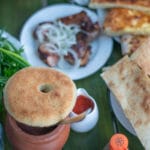 January 30, 2023 Salobie
January 30, 2023 Salobie
We met Tega at a friend’s dinner table shortly after moving to Tbilisi in 2002. Tall, […] Posted in Tbilisi
Rowan TwineRowan Twine
Published on November 22, 2023
Related stories
January 30, 2024
Tbilisi | By Pearly Jacob
TbilisiFor a dish so ubiquitous, one would be forgiven to think there’s little to debate about Georgia’s national dumpling, the khinkali. But just as tastes vary, every Georgian has their own khinkali preferences and opinions. That’s certainly the case for chef Gela Arabuli, who believes khinkali has been gentrified and mass produced to the point…
February 28, 2023
TbilisiWe are on the eighth floor terrace of a relatively new apartment building in the Vedzisi neighborhood, nodding our heads with joker grins like gawkers at a freak show. The view is as spectacular as they come in mountainy Tbilisi, but that’s not what we’re chuckling at. There are 43 ceramic urns – kvevri –…
January 30, 2023
TbilisiWe met Tega at a friend’s dinner table shortly after moving to Tbilisi in 2002. Tall, debonair, with dark puppy eyes and an ever-present Colgate smile, Tega made it a point from that first meeting to take us under his wing and introduce us to the best Tbilisi had to offer. That was how we…







































